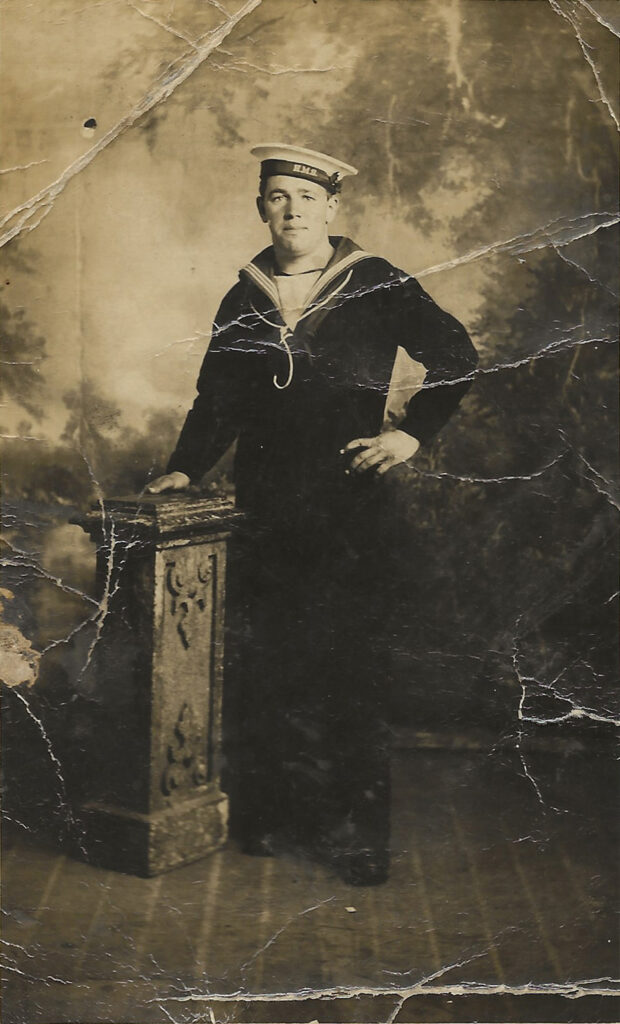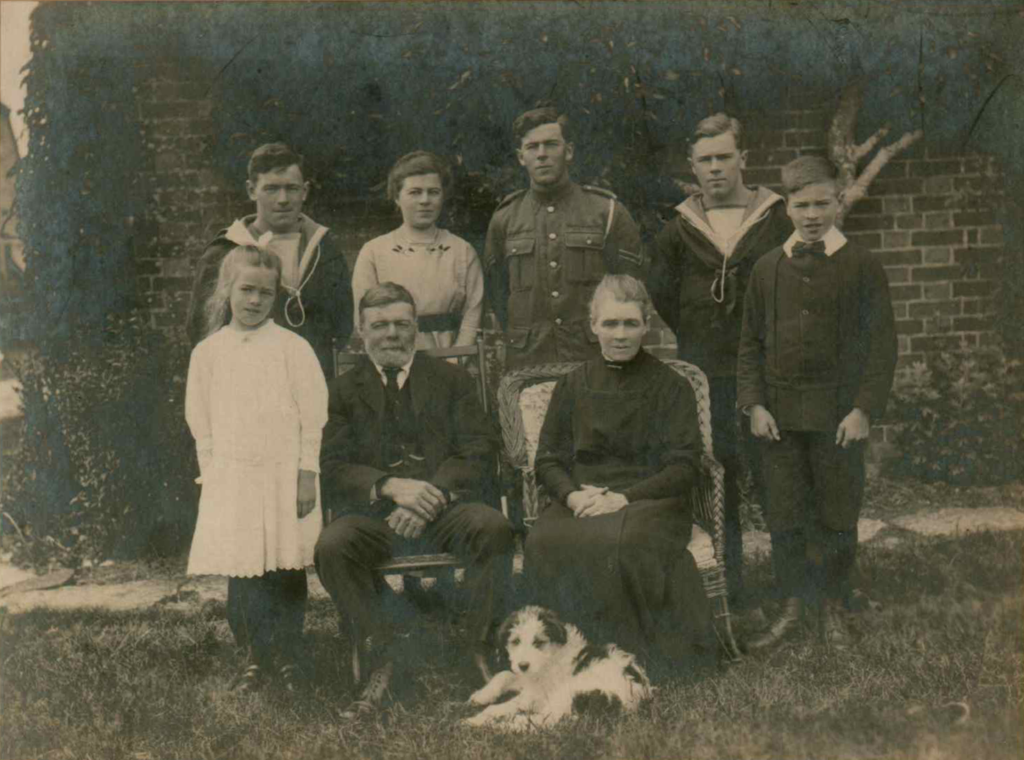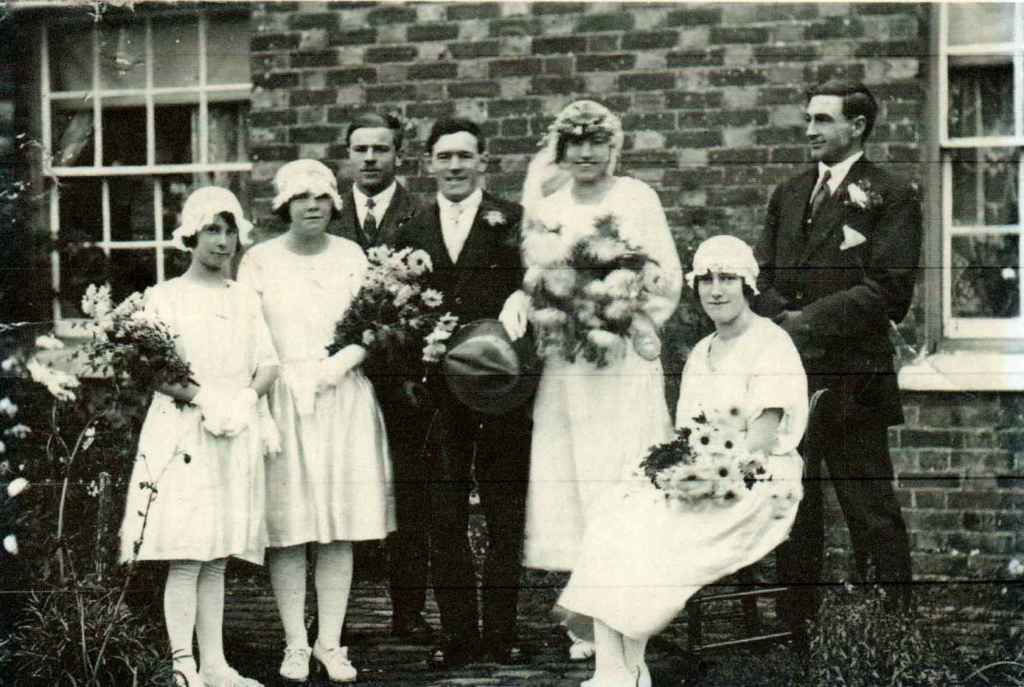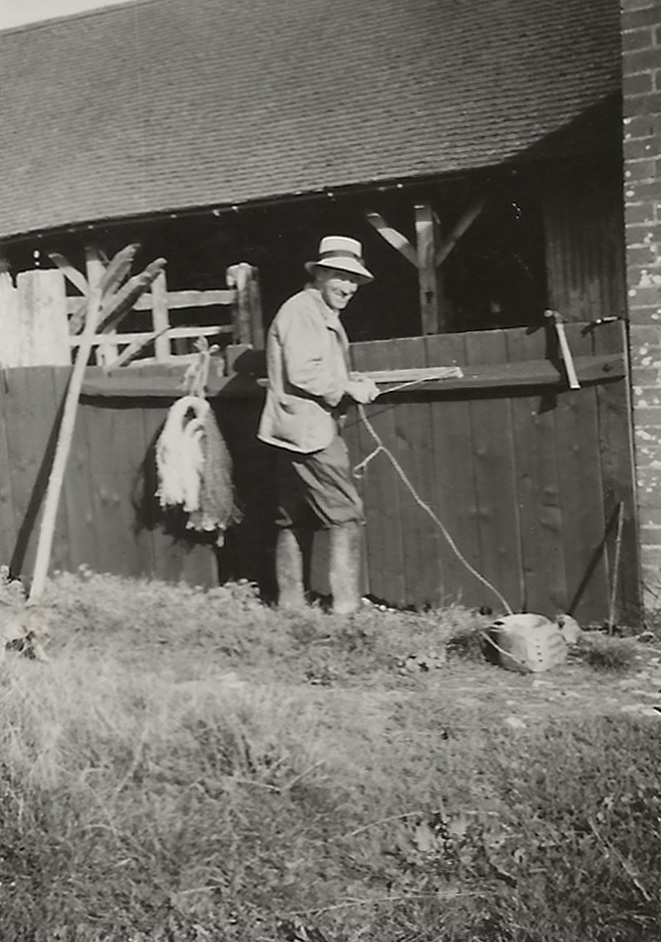Clarence Rook, 1862-1915
Cecil Sharp included two versions of ‘The shooting of his dear’ in the 1905 Journal of the Folk-Song Society. He wrote that “I noted the second version – which is but a fragment – from Mr. Clarence Rook, who heard it sung twenty years ago by a very old man at a Harvest Supper at Homestall, Doddington, near Faversham, Kent”. The readers of the Journal would probably have known Clarence Rook’s name, as he was a successful journalist and author.
His birth was registered at Faversham in the first quarter of 1863, although his death certificate gives his birth year as 1862. His mother was Miriam née Beall, while his father Henry Rook was a bookseller and postmaster in Faversham. The 1871 and 1881 census returns show the family living at 2 Market Place, Faversham; Clarence had one younger sister.
Local newspapers show that he took place in various local entertainments in 1880. For instance in May at the Board Schoolroom in Lynsted, when his delivery of an unnamed song earned an encore1; in Sittingbourne in November, when “A concert of secular music was given at the school-room in Crescent-street, on Monday evening, by the Free Church Choir, assisted by friends from Faversham”, and “the humorous songs of Mr. Frank Shrubsole, and Mr. Clarence Rook provoked much merriment”2 (other songs performed at this event included ‘The bailiff’s daughter of Islington’ and ‘O, who will o’er the Downs’); and then in December, at a Penny Reading given in the Town Hall, under the auspices of the Sittingbourne and Milton Workmen’s Club and Institute3. At the latter event, “Mr. Clarence Rook, of Faversham, created a perfect furore with his comic song about “the big drum, the kettle drum,” &c., and although it had been arranged that there should be no encoring, owing to the length of the programme, the audience would not be satisfied until he re-appeared, when he gave “I am so volatile” [one of the most popular songs of the comedian and singer George Grossmith] with equal success”. At the same event he also played a part in a performance of the comedic play ‘The Heir at law’.
He studied at Oriel College, Oxford between 1881 and 1886, although he still found time to make a musical contribution to the annual general meeting of the Sittingbourne Literary and Scientific Association in December 1885.4 At the time of the 1891 census he was residing at 9 Manilla Road, Clifton, in Bristol, employed as an Army & Civil Service tutor. He married Clara Wright in London, in 1893.
The 1899 Post Office London Directory lists Clarence as a journalist, living at 7 Milborne Grove, West Brompton, SW, and that was also the address recorded for him and Clara in the 1901 census; in 1911 they were residing at 139 Coleherne Court, Earls Court, Kensington.
Rook wrote for various London publications including The Globe, contributing to the humorous “By the Way” column, and The Daily Chronicle, where he founded the “Office Window” column. A brief notice of his death in the Faversham News, 1st January 1916, described him as “the originator and for 15 years editor of “The Office Window” in The Daily Chronicle”.
In the Dictionary of Literary Biography, Anita Levy described Clarence Rook as
a journalist, novelist, and writer of short, witty sketches of Edwardian London and its inhabitants. Bernard Shaw praised Rook as a “very clever fellow”; and Rook was most admired for his novel of working-class life, The Hooligan Nights (1899), an evocative, irreverent portrait of a young petty criminal, Alf, and his felonious and amorous adventures. As a chronicler of the slums of London’s East End, Rook takes his literary and historical place among such eminent contemporaries as George Gissing, Rudyard Kipling, Arthur Morrison, and Sir Walter Besant — writers of fiction, non-fiction, and semifiction in the literature of urban life popular in Britain during the 1880s and 1890s.5
In his Introduction to The Hooligan Nights: Being the Life and Opinions of a Young and Impertinent Criminal Recounted by Himself and Set Forth by Clarence Rook, Rook stated
This is neither a novel, nor in any sense a work of imagination. Whatever value or interest the following chapters possess must come from the fact that their hero has a real existence. I have tried to set forth, as far as possible in his own words, certain scenes from the life of a young criminal with whom I chanced to make acquaintance, a boy who has grown up in the midst of those who gain their living on the crooked, who takes life and its belongings as he finds them, and is not in the least ashamed of himself.6
Questions have been raised as to the veracity of what Rook had written, while readers were scandalised by his apparently non-judgmental portrayal of the central character. To quote again from the Dictionary of Literary Biography
The Hooligan Nights consists of twenty-two short, descriptive sketches of the hooligan’s exploits, a format that Rook perfects in London Side-Lights. The reader meets the hooligan Alf on the bustling streets of London’s Elephant and Castle, eager to announce his “philosophy of life,” which Rook transcribes in the harsh phonetics of cockney English: “If you seen a fing you want, you just go and take it wiveout any ‘anging abart.” From there Rook follows Alf in word and deed as he shares his life story over ginger beer in a Lambeth pub, shows Rook around his turf, and introduces him to his girlfriends and criminal associates. In the process Rook recounts such gems as “The Burglar and the Baby,” a charming piece describing Alf ‘s rescue of a choking baby in a house into which he has broken; “Jimmy,” an account of Alf ‘s first mentor in crime; and “The Course Of True Love,” recounting Alf ‘s decision to marry his pregnant lover, Alice. “Holy Matrimony” finds Alf at the church after his marriage, bringing the book to a surprisingly traditional end much after the fashion of a domestic novel.
On the whole, Rook’s approach to representing his working-class hero is remarkably unsanctimonious, reveling in the hooligan’s felonious adventures and attempting to scandalize his middle-class readers, especially when he recounts Alf ‘s brutal treatment of his future wife. In fact, the public was so scandalized on the publication of portions of the work in the Daily Chronicle, as Rook explains in the introduction, that he was accused of making too positive a portrait of criminal life. In defense Rook argues that Alf is real and that “in real life the villain does not invariably come to grief before he has come of age.” He goes on to compare Alf ‘s life favorably to that of a clerk, no doubt raising a few more eyebrows among his readers, and ends by denying responsibility for the book’s contents: “If under the present conditions of life a Lambeth boy can get more fun by going sideways than by going straight, I cannot help it.” 7
In his newspaper articles, when Rook discusses popular song, he is generally referring to songs such as ‘Two lovely black eyes’, ‘Champagne Charlie’ and ‘Tommy make room for your uncle’, rather than folk songs from the oral tradition. However, having remembered just a fragment of ‘The shooting of his dear’ from the 1880s, he actively sought out the remainder of the words. The following appeared in the Faversham Times and Mercury and North-East Kent Journal, Saturday 21st December 1901:
AN OLD KENTISH BALLAD.
MISSING LINES WANTED.
The following paragraph appeared one day last week in the leaderette columns of the Daily Chronicle:-
A curious accident in the neighbourhood of Colchester awakens dim memories of an old Kentish ballad which used to be chanted monotonously at harvest suppers. The accident happened to a Mr. Mussett, who was out shooting wild fowl by night. The account runs: “As Mussett rose to shoot some approaching birds, the other man, it is stated, let drive at him with a punt gun, mistaking him in the dim light for a wild swan.” The melancholy refrain of the ballad runs:–
O! cursed be my uncle for a-lending of me a gun!
For I bin and shot my trew love, in the room of a swan.It was set to a dismal melody in the minor key, and should linger in the memory of many of Kent. Can anyone supply the rest of the lines?
We have received the following communication on the above subject: –
To the Editor of “The Faversham Mercury.”
Dear Sir, – I wonder if any of the Mercury‘s readers could remember and reproduce the missing words of this song. Little more than I have quoted (in that paragraph from the Daily Chronicle column) remains in my memory, for twenty years have passed since I first heard it chanted by a solemn man with chin-whiskers and a pipe in a Dodington farmhouse. And as you will see the Association of Men of Kent and Kentish Men want to disinter it. Another couplet which I can recall runs thus (it is spoken by the girl, supposed to have been shot):-
With my apron tied ower me, I ‘peared like unto a swan;
All underneath the green tree, while the showers they did come on.Now, surely someone among your readers can supply a few more lines.
Yours,
CLARENCE ROOK
The Daily Chronicle,
Editorial Office
31, Whitefriars Street,
London,
December 13th, 1901.
Given that these were the only words for the song which Cecil Sharp had from Rook, we have to assume that his appeal for the words was not successful.
Clarence Rook died at the age of 53, on 23rd December 1915, his death being registered at St. George, Hanover Square, London. His death certificate gave the cause of death as “paralysis, bed sores and exhaustion”, but also stated that he had suffered for 26 years from Locomotor ataxia, which is often a symptom of syphilis. He was cremated at Golder’s Green.
Songs
The shooting of his dear (Roud 166)
- East Kent Gazette, 8 May 1880 ↩︎
- Kentish Gazette, 30 November 1880 ↩︎
- East Kent Gazette, 18 December 1880 ↩︎
- East Kent Gazette, 3 January 1885 ↩︎
- Anita Levy, Clarence Rook (1863-23 December 1915), Dictionary of Literary Biography Vol 135, British Short-Fiction Writers, 1880-1914: The Realist Tradition, p304 ↩︎
- https://www.victorianlondon.org/publications7/hooligan-01.htm ↩︎
- Anita Levy, Clarence Rook (1863-23 December 1915), Dictionary of Literary Biography Vol 135, British Short-Fiction Writers, 1880-1914: The Realist Tradition, p307 ↩︎











